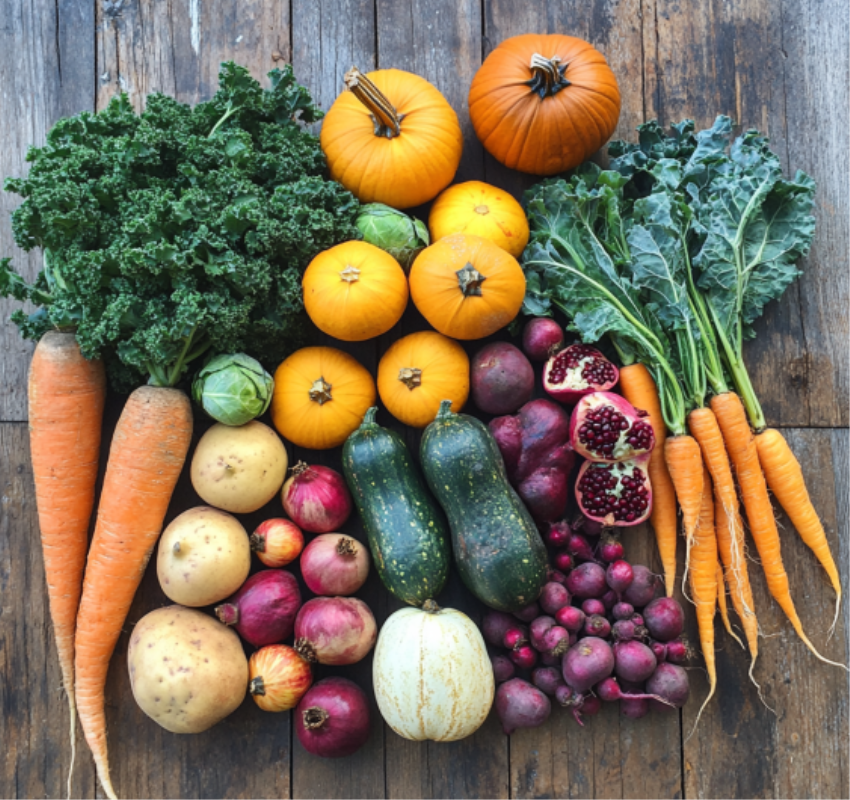If you’ve been advised to follow a low-FODMAP diet while on your weight loss journey, you’re not alone. Many people find themselves navigating both weight loss goals and dietary restrictions at the same time, often due to medical conditions like irritable bowel syndrome (IBS). Combining these two paths might seem tricky at first, but with the right strategies, it’s entirely possible to lose weight while managing your digestive health. This article will break down what a low-FODMAP diet is, how it works, and its potential impact on weight loss. Plus, you'll find practical tips to make it easier to combine these goals in a healthy and balanced way.
What Are FODMAPs and Why Do They Matter?
FODMAP stands for fermentable oligosaccharides, disaccharides, monosaccharides, and polyols. These are types of carbohydrates found in many common foods. For most people, FODMAPs aren’t a big deal. But for those with conditions like IBS, these carbs can cause digestive distress. Symptoms include bloating, gas, abdominal pain, diarrhea, or constipation.
FODMAPs are poorly absorbed in the gut, which is why they are known to ferment and create gastrointestinal discomfort. A low-FODMAP diet reduces or eliminates high-FODMAP foods, giving your digestive system a chance to stabilize. Foods like onions, garlic, wheat, certain fruits (like apples and pears), and some dairy products are high in FODMAPs. While this diet isn’t intended for everyone, it can be life-changing for those with FODMAP sensitivity.
The Link Between Low-FODMAP Diets and Weight Loss
The primary goal of a low-FODMAP diet is to reduce symptoms of digestive distress. However, if you’re also trying to lose weight, you might wonder if this dietary shift will help—or hurt—your progress. The good news? A low-FODMAP diet can fit smoothly into a weight loss plan, but it’s important to approach it with the right perspective.
Benefits of a Low-FODMAP Diet for Weight Loss
- Fewer Processed Foods: Since high-FODMAP foods like packaged snacks, bread, and certain sugary items are often off-limits, a low-FODMAP diet naturally pushes you toward whole, unprocessed foods. This can aid weight loss because these foods are typically lower in calories and more nutrient-dense.
- Better Digestion: Bloating and discomfort can make you feel heavier and less motivated to stay active. Many people who adopt a low-FODMAP diet find they feel lighter and more comfortable, making exercise and staying consistent with weight loss efforts easier.
- Mindful Eating: Any targeted diet requires you to pay close attention to what you eat. This mindfulness can lead to healthier food choices. For example, instead of grabbing a high-FODMAP snack, you might opt for a low-FODMAP fruit like a banana or a bowl of plain oats.
Challenges to Watch Out For
While a low-FODMAP diet has benefits, it does come with obstacles—especially if you’re also focused on weight loss. Some of the common challenges include:
- Restricted Options: High-FODMAP foods include many fiber-rich staples like lentils, beans, and broccoli, which are filling and great for weight loss. Finding replacements can take time and creativity.
- Risk of Overeating Substitute Foods: While eliminating certain foods, you might rely heavily on others, such as gluten-free processed products, that can be calorie-dense and less nutrient-rich.
- Complexity and Planning: Following a low-FODMAP plan requires planning, which can add stress and make it harder to track calories or macros if you’re losing weight.
What Does the Science Say?
There isn’t extensive research directly linking low-FODMAP diets to weight loss. Most studies focus on the diet’s effectiveness in managing IBS symptoms rather than its role in calorie reduction. However, reducing bloating and inflammation can help you feel more comfortable in your weight loss efforts, making it easier to stay consistent.
A 2020 study on low-FODMAP diets in people with IBS found that participants reported improved quality of life alongside symptom relief. Indirectly, this boost in well-being can support weight loss by improving motivation and overall health.
Additionally, when you focus on eating whole, low-calorie, low-FODMAP foods, such as lean proteins, zucchini, berries, and eggs, you create the caloric deficit needed to shed pounds.
Practical Tips for Combining a Low-FODMAP Diet with Weight Loss
Combining these two goals doesn’t have to be overwhelming. Here are some tips to help make it work:
Start with a Plan: Work with your healthcare provider, dietitian, or nutritionist to create a meal plan that addresses both your digestive needs and weight loss goals. This can prevent unnecessary trial and error.
Focus on Whole Foods: Build meals around low-FODMAP vegetables (like carrots, spinach, and green beans), lean proteins (chicken, fish, or tofu), and gluten-free grains like rice or quinoa. These foods support a balanced diet while keeping your calorie intake in check.
Track Your Portions: It’s easy to overeat when you start replacing high-FODMAP favorites with calorie-dense alternatives. Pay attention to portion sizes, especially for higher-fat foods like nuts, seeds, and avocado.
Experiment with Meal Prep: Preparing low-FODMAP meals in advance saves time and ensures you have compliant, weight-loss-friendly options on hand.
Stay Hydrated: Water supports digestion and can help with bloating, which is a common concern when changing your diet. Plus, hydration aids metabolism and helps you feel full.
Monitor Your Progress: Keep track of how you feel physically and any changes in your weight. This accountability can help you tweak your plan if needed.
Don’t Skip the Reintroduction Phase: A low-FODMAP diet isn’t meant to be forever. Over time, foods are reintroduced to identify tolerances. This phase is crucial to ensure you’re not unnecessarily limiting foods that could benefit your diet and weight loss efforts.
Common Misconceptions and How to Address Them
You might come across some misconceptions about low-FODMAP eating. One common myth is that it’s a guaranteed path to weight loss. While it can complement weight loss, it’s not inherently a low-calorie diet. Another misconception is that low-FODMAP means cutting out all carbs. While certain carbs are avoided, many safe options like potatoes, rice, and gluten-free pasta are perfectly compatible with the diet.
Be wary of overly restrictive approaches. Low-FODMAP doesn’t mean giving up enjoyment or variety in your diet. Keeping your meals flavorful and satisfying with herbs, spices (like ginger or turmeric), and low-FODMAP condiments can help you stay consistent with both the diet and your weight loss goals.
Finding Balance
Balancing a low-FODMAP diet with weight loss is a unique challenge, but it’s far from impossible. By combining the discipline of a tailored eating plan with a focus on nourishing your body, you can achieve comfort, health, and steady progress toward your goals. Instead of seeing your dietary restrictions as limitations, view them as an opportunity to explore new foods, improve your digestion, and create a long-lasting, healthy relationship with food. Stay patient, stay focused, and celebrate your wins—no matter how small!
 (Image via
(Image via





